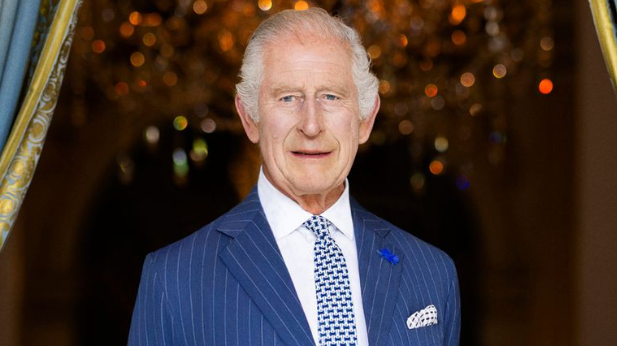King Charles health has been a topic of public concern since his cancer diagnosis in February 2024. Despite his ongoing treatment, the King continues to fulfill royal duties, demonstrating resilience and dedication. His condition, though managed, remains a significant aspect of his life, influencing both his personal and public engagements.
In a rare public update, King Charles shared that he was feeling “a lot better now,” referring to his health as “just one of those things.” This statement, made during a walkabout in Newmarket, reflects his positive outlook despite the challenges posed by his illness. It’s important to note that while the King maintains an active schedule, his health remains a delicate matter, requiring careful management and support from his family and medical team.
Table of Contents
A Timeline of King Charles’s Health Journey
In January 2024, King Charles underwent a procedure to treat a benign enlarged prostate. During this treatment, doctors discovered a separate issue of concern, leading to further diagnostic tests that identified a form of cancer. Buckingham Palace announced the diagnosis on February 5, 2024, stating that the King had commenced a schedule of regular treatments and would postpone public-facing duties while continuing state business and official paperwork as usual.
Over the following months, King Charles’s treatment was described as a “managed condition,” allowing him to maintain a partial schedule of engagements. In March 2025, he was briefly hospitalized due to side effects from the therapy, an event the Palace referred to as a temporary setback. He was discharged shortly afterward and resumed light duties.
Balancing Royal Duties and Health
Despite his health challenges, King Charles has continued to fulfill his royal duties. He has attended various public events, including the 80th anniversary of VJ Day, where he was seen with Queen Camilla. During this emotional ceremony, a 105-year-old war veteran saluted the King for attending despite undergoing cancer treatment, deeply moving both the King and Queen.
In addition to public appearances, King Charles has engaged in private meetings and state business. His commitment to his role underscores his dedication to the monarchy and the people he serves.
The Role of Family Support
Throughout his health journey, King Charles has received unwavering support from his family. Queen Camilla has been a constant presence, accompanying him to appointments and public events. Their partnership exemplifies the strength of familial bonds during challenging times.
Prince William and Princess Kate have also shown their support, with Prince William expressing his admiration for his father’s resilience. The family’s collective support plays a crucial role in King Charles’s ability to manage his health while continuing his royal responsibilities.
Public Perception and Media Coverage
The public’s awareness of King Charles’s health has been shaped by Buckingham Palace’s transparency. The decision to disclose his diagnosis, while withholding specific details, aimed to prevent speculation and encourage public understanding of cancer. This openness has fostered a sense of connection between the King and the public.
Media coverage has varied, with some outlets focusing on the King’s health journey and others scrutinizing his ability to perform royal duties. Despite this, King Charles has remained steadfast, focusing on his recovery and responsibilities.
Medical Insights and Treatment Progress
While specific details of King Charles’s cancer diagnosis remain undisclosed, medical experts note that early detection and regular treatment are crucial in managing cancer. The King’s ongoing treatment regimen suggests a proactive approach to his health, aiming to maintain his quality of life and ability to perform his duties.
Advancements in medical science have played a significant role in the King’s treatment plan. Ongoing research and improved therapies continue to offer hope to patients worldwide, including the monarch.
Lifestyle Adjustments and Health Management
In addition to medical treatment, lifestyle adjustments play a vital role in managing health conditions. King Charles has been known for his commitment to a healthy lifestyle, including a balanced diet and regular physical activity. These habits contribute to his overall well-being and may aid in his recovery process.
It’s important to note that lifestyle changes should be discussed with healthcare providers to ensure they complement medical treatments effectively.
Looking Ahead: The Future of King Charles’s Health
As King Charles continues his treatment, the future remains cautiously optimistic. His resilience, combined with the support of his family and medical team, positions him well for ongoing recovery. While the specifics of his health journey are private, the public’s support and understanding continue to be a source of strength for the King.
Conclusion
King Charles’s health journey is a testament to his resilience and dedication to his role. Through transparency, family support, and a proactive approach to treatment, he navigates the challenges of his condition while maintaining his royal duties. The public’s continued support and understanding play a crucial role in his journey, reflecting the collective strength of the monarchy and the people it serves.
FAQs
- What type of cancer was King Charles diagnosed with?
- Buckingham Palace has not disclosed the specific type of cancer King Charles has been diagnosed with.
- Buckingham Palace has not disclosed the specific type of cancer King Charles has been diagnosed with.
- How has King Charles’s health affected his royal duties?
- While King Charles has postponed some public-facing duties, he continues to engage in state business and official paperwork.
- While King Charles has postponed some public-facing duties, he continues to engage in state business and official paperwork.
- Who supports King Charles during his health journey?
- King Charles receives support from his wife, Queen Camilla, and other family members, including Prince William and Princess Kate.

